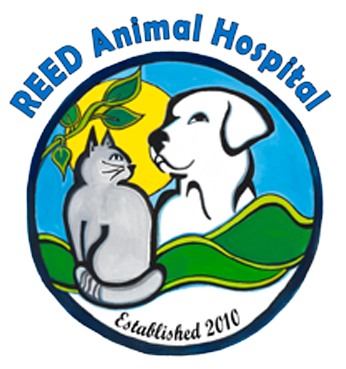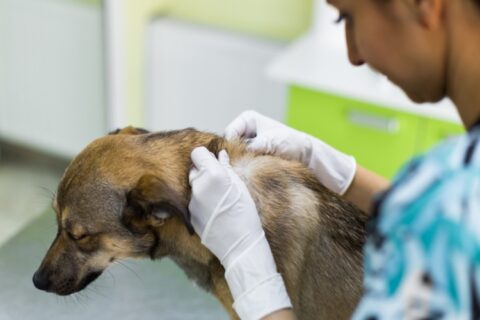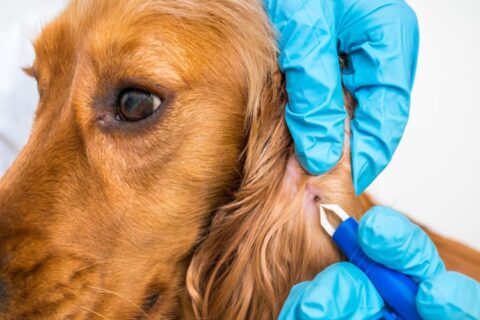Signs of Pyoderma in Your Pet and What You Need to Know

All dogs scratch themselves occasionally, but if your pet has red skin, pimples, or hair loss, an underlying skin condition could be to blame. Pyoderma is a bacterial infection that affects hair follicles and the surrounding skin. Watch out for the signs of pyoderma in your pet and other things you need to know about this infection.
Signs of Pyoderma in Dogs
Pyoderma may manifest in numerous ways. Some dogs have symptoms all over their body, while others have a limited infection in just one area. Places where the skin overlaps are commonly infected, including the armpits, groin, facial folds, and between the toes. Sometimes itching occurs, but not always.
The overarching symptoms to watch out for include:
- Areas of red, swollen skin
- Red bumps
- Lesions or pustules
- Flaky or crusty skin
- Discharge from the skin
- Excessive shedding
Causes and Risk Factors of Pyoderma
Breeds with skin folds such as bulldogs and pugs are particularly vulnerable to pyoderma, but it can affect dogs of all ages, sizes, and breeds. Still, underlying factors are usually to blame. These may include:
- Foreign object getting under the skin
- Trauma or bite wound becoming infected
- Allergic reaction to fleas, food, or environment factors
- Presence of mites on the skin
- Hormonal or autoimmune disorder
- Gastrointestinal problems
- Poor nutrition
- Chemotherapy or steroids
How Your Pet’s Food May Cause Pyoderma
Your dog needs adequate nutrition to maintain healthy skin. When an animal’s body detects malnutrition, it sends all available resources to the vital organs, leaving the skin and fur to deteriorate. Feeding your dog a healthy, vet-approved diet is often an effective way to prevent and treat pyoderma.
Your dog could also be allergic to any ingredient in her food. To confirm or rule this out, your vet may recommend a hydrolyzed dog food or one with novel protein to see if the skin condition improves. Along with changing your dog’s diet, your vet may also prescribe food allergy medications or blood testing to determine what your dog is allergic to.
If your dog has another underlying health problem that makes her more susceptible to pyoderma, such as a hormonal or autoimmune disorder, it may be beneficial to select food formulated for dogs with sensitive skin. Your vet can help you choose a product that meets the needs of your four-legged friend.
Treatments for Pyoderma in Dogs
Antibiotics and antibacterial shampoos or sprays are the most common treatment options for pyoderma in dogs. After resolving the existing bacterial infection, the final step is to address any related underlying conditions so it doesn’t return.
If you have noticed signs of pyoderma or other skin infections in dogs, Reed Animal Hospital can help. We’ll diagnose the condition and treat it promptly with your pet’s best interests in mind. Our goal is to have your pet feeling normal again as soon as possible! To schedule an appointment, please call us in Campbell, CA at 408-369-1788 or in Saratoga, CA at 408-647-2906. You can also contact us online.


